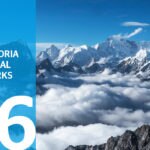BBVA Annapurna and Dhaulagiri Expedition 2016
In spring 2016, the BBVA Expedition led by Carlos Soria will help the seasoned climber to take on one of the most ambitious challenges in his career: the “double goal” of crowning the summits of the Annapurna and the Dhaulagiri.
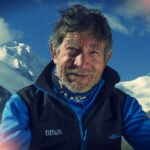
The Annapurna is the eighth tallest mountain in the world and one of the 14 eight-thousanders. The Dhaulagiri towers 34 km west, beyond the Kali Gandaki gorge, the deepest in the world. This will be Carlos Soria’s third attempt at conquering the Annapurna, and the fifth occasion on which he takes on the Dhaulagiri.
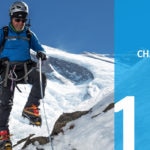
Succeeding at the BBVA Expedition’s goal – to climb the Annapurna and the Dhaulagiri - would be a historic achievement, as Carlos Soria would become the eldest person ever to climb these mountains. And he would also come a bit closer to achieve the incredible feat of climbing the fourteen highest mountains in the world.
Carlos Soria is the perfect example of age not being a hurdle to chase one's dreams. Carlos Soria’s challenge proves how far passion for life, tenacity and the drive to succeed can take a person. The final major goal of the expedition is to help raise awareness among the general public about mountain climbing, showcasing its virtues as an activity that allows to enjoy mountains in a healthy and different way.
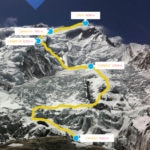
Annapurna
To tackle the Annapurna challenge, the expedition has chosen to take a variation of the original French route, although on this occasion, following a path to get to camp III from camp II that’s substantially different than the one taken on the previous attempt. The Base Camp will be set up at an altitude of 4,200 m. From there, team plans to assemble Camp I at 5,200 m and then Camp II at 5,700 m. Before the summit, two more camps will be set up: Camp III (6,700 m) and Camp IV (7,100).
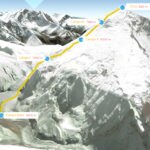
Dhaulagiri
The BBVA Expedition will take on the mountain following the normal route, the one that treads the north-western faces of the “White Mountain”, posing an extremely complex and tough ascent. Other routes have been ruled out because they are virtually inaccessible. Based on the fact that by then the expedition should be pretty well acclimatized, the Base Camp will be set up at an altitude of 4,600 m and Camp I at 5,900. Camp II will be assembled at 6,500 m, and Campo III the third and last before the summit at 7,550 m.
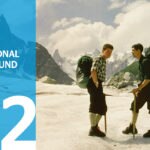
Carlos Soria’s passion for the mountain begun at the tender age of 14, during his first trek in the Guadarrama Range (Madrid and Segovia) with his friend Antonio Riaño. That was the first of the many expeditions that led him to, at the age of 21, take things to the next level: In 1960 he drove a Vespa scooter for three days all the way to the Alps, and set out to take on his first challenge in the world of top-level mountaineering. In 1968 he took part in the first Spanish expedition to Russia, to climb Mount Elbrus, the highest peak in Europe (5,642 m), and in 1971 he travelled to Alaska with the first Spanish expedition to Mount McKinley, North America’s highest peak (6,194 m).
Since then, Carlos Soria has remained inextricably linked to the history of Spanish mountaineering. In 1973 and 1975 he took part in the first Spanish expeditions to the Himalaya, and witnessed Spain’s first eight-thousander summit by Jerónimo López and Gerardo Blázquez. However, it wasn’t until 1990 that he managed to climb his first eight-thousander 17 years after his first attempt. In 2010, he made it to the top of Mt. Manaslu 37 years after his first attempt, an achievement that bears witness to his tenacity and drive.
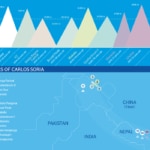
In July 2011, BBVA started backing Carlos Soria through a sponsorship program that is helping him take on the final stage of his challenge to climb the 14 eight-thousanders with more chances to succeed, broader resources and the support of a growing fan base that follows his challenges with great interest.
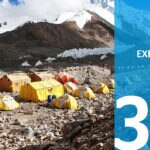
Material means
The expedition will require logistical and human support, not only to tackle the ascent to the mountain, but right from the start in Katmandú. A Nepalese trekking and adventure company will take care of both the bureaucratic paperwork to formalize the expedition in the Nepalese ministry and the provision of the equipment. During the trek to the Base Camp, it will be necessary to move about 2,500 kg of material. Also, throughout the expedition, the team will be assisted by several Sherpa, a cook and two kitchen assistants. This team’s cooperation and commitment will be essential to guarantee the project’s success.
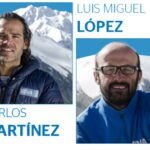
Human means
Most of the equipment that Carlos Soria’s team will need is already waiting at Katmandu, thanks to his previous expeditions. Climbing the two mountains will require more than 1,500 meters of fixed rope, a dining tent, a storage tent, a kitchen tent and a communications tent, plus 12 small tents for the Base Camp, and 14 for the altitude camps. The communications tent will be equipped with a solar charging system with panels, batteries and a generator, as backup unit in case the solar panels fail.
Carlos Soria will not be alone. A group of professionals and friends will accompany him in this new adventure.
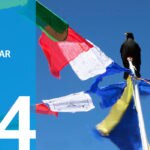
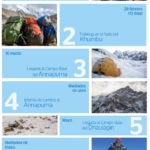
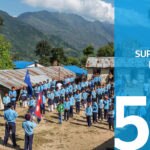
On 25 April 2015, a 7.9 magnitude earthquake and several aftershocks shook Nepal. The country’s worst natural disaster since 1934 devastated Katmandu and affected many villages in remote and hard to access locations, far away from the capital. The BBVA Expedition was at the Annapurna Base Camp when the earthquake hit and was forced to return to Katmandu.
Carlos Soria’s strong ties to the Nepalese people drove him to organize a number of actions to help in the early stages of the aftermath. The whole world rushed to help Nepal, but one year later, the country still needs the efforts. That is why Luis Miguel López, camera operator and a personal friend of Carlos, founded the association Ayuda Directa Himalaya. Through different actions, such as the solidarity trek to Ama Dablam in fall 2015, the NGO is helping poorly communicated villages get some of the aid they need, and has already rebuilt two schools in Pawai and Lwasa.
